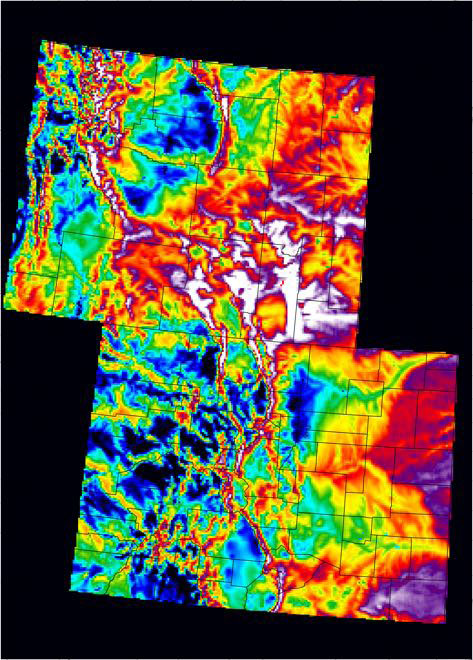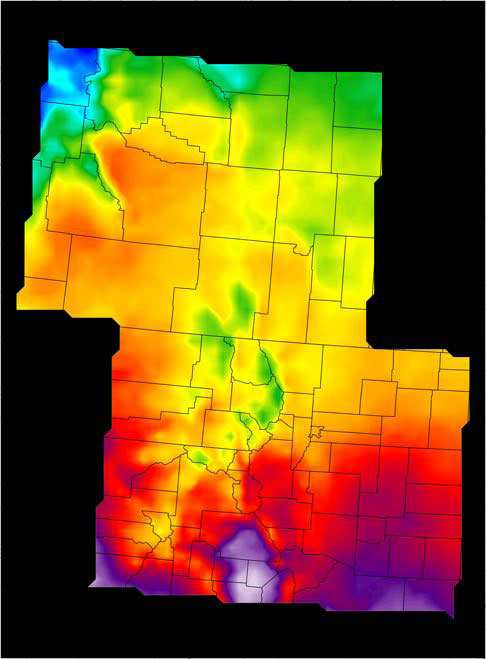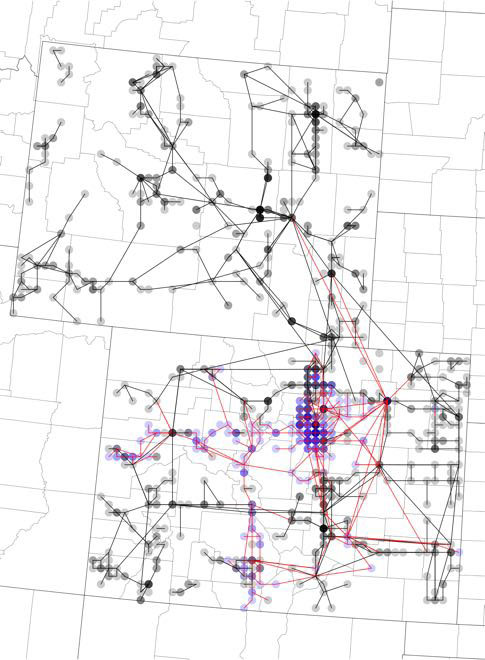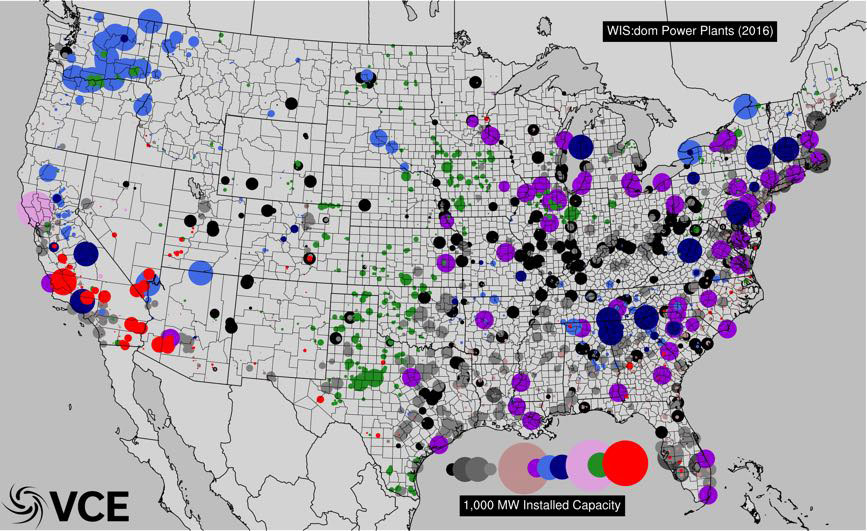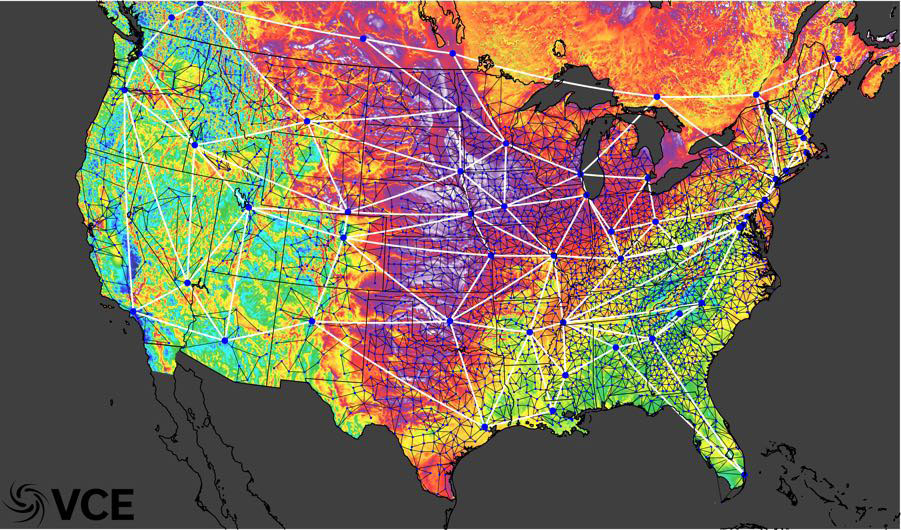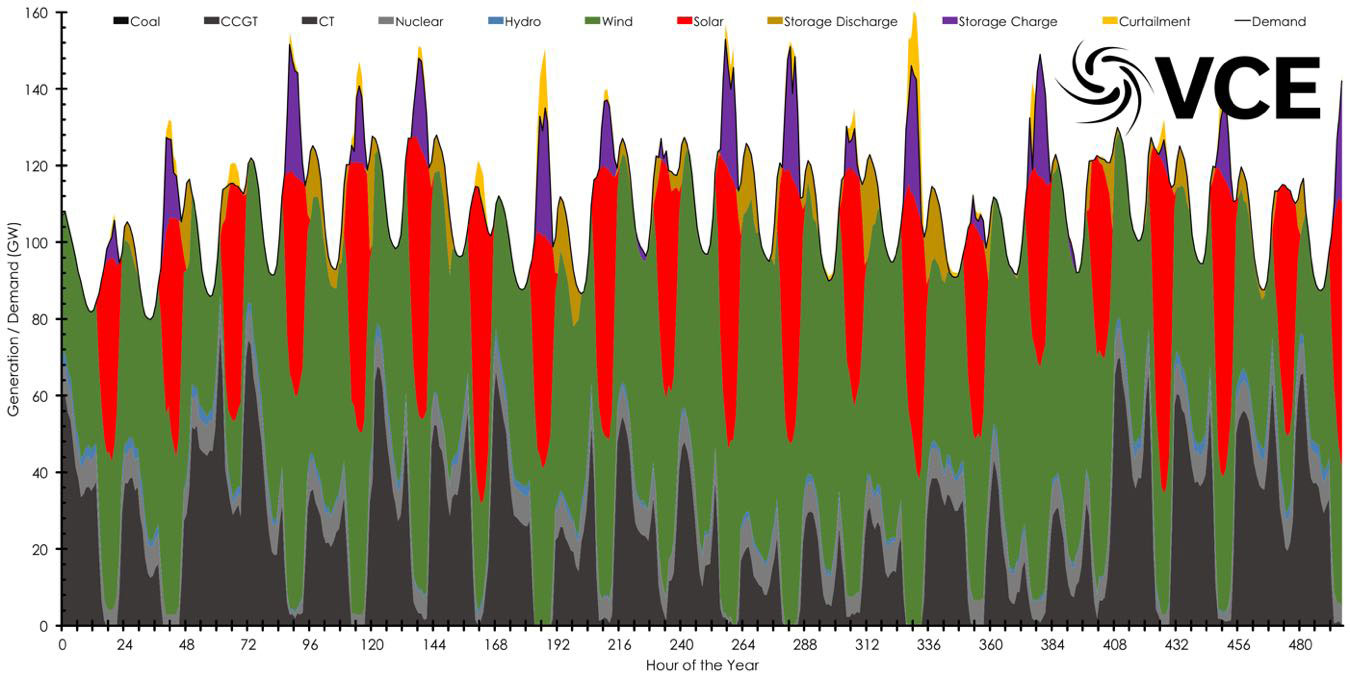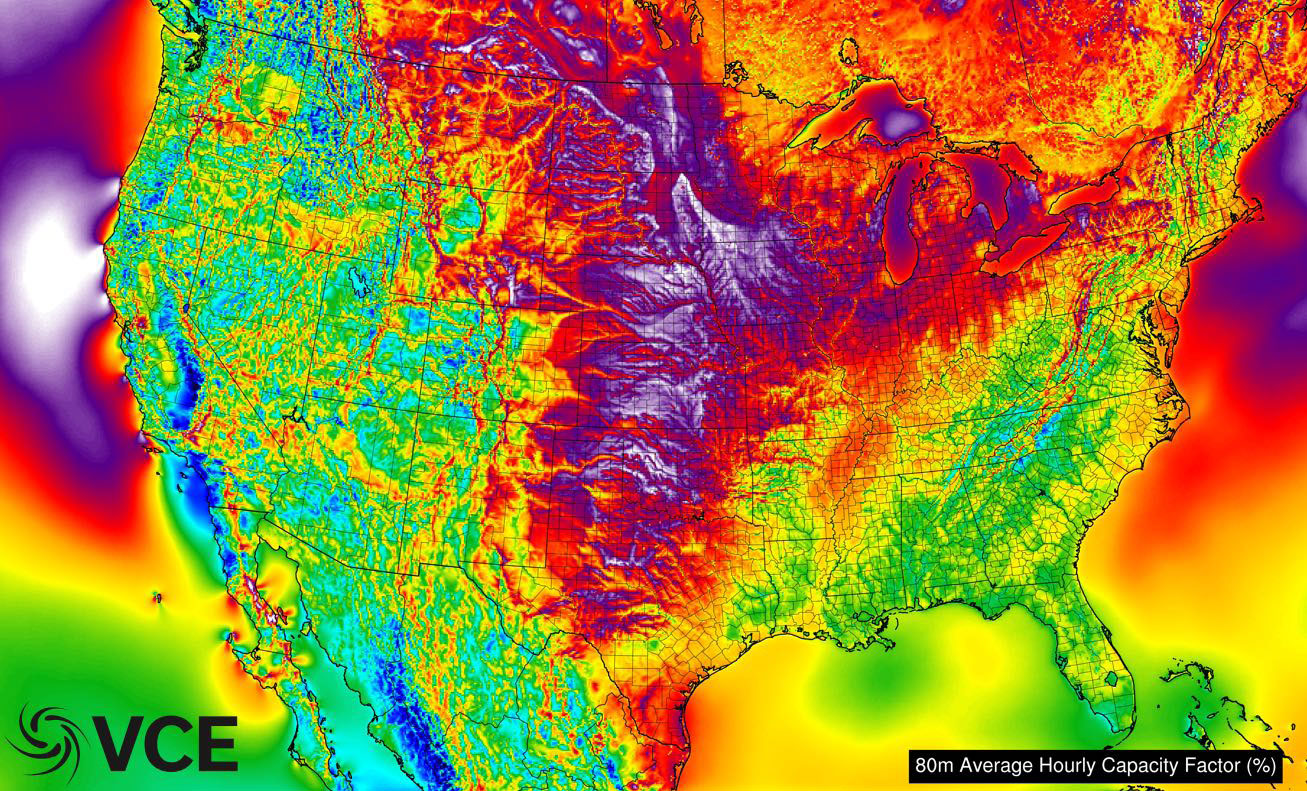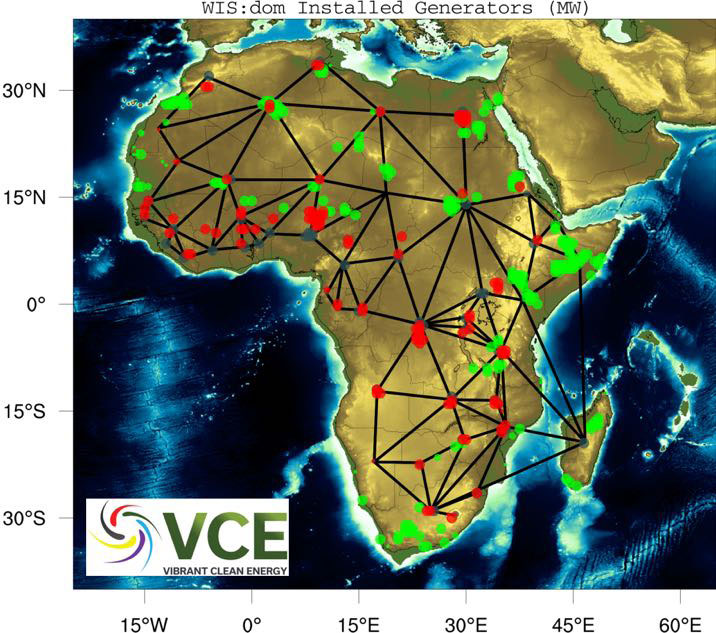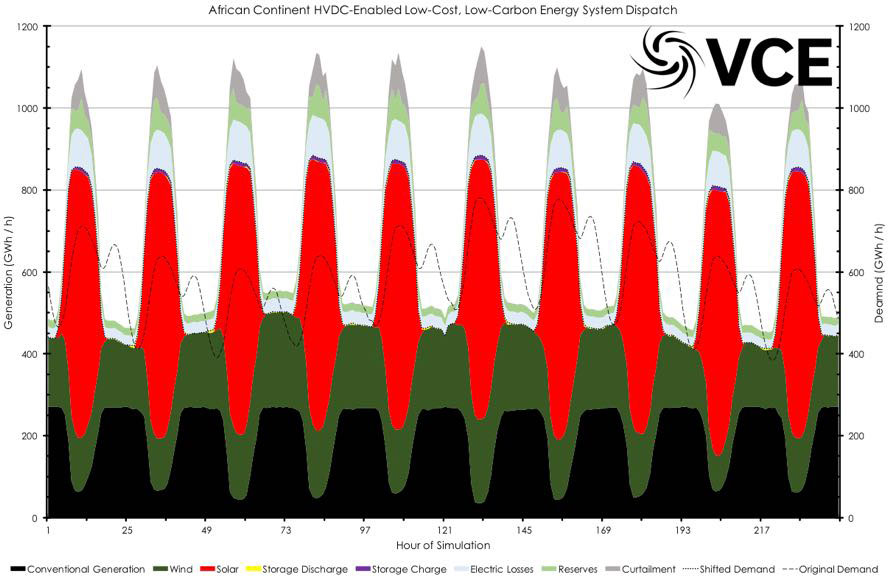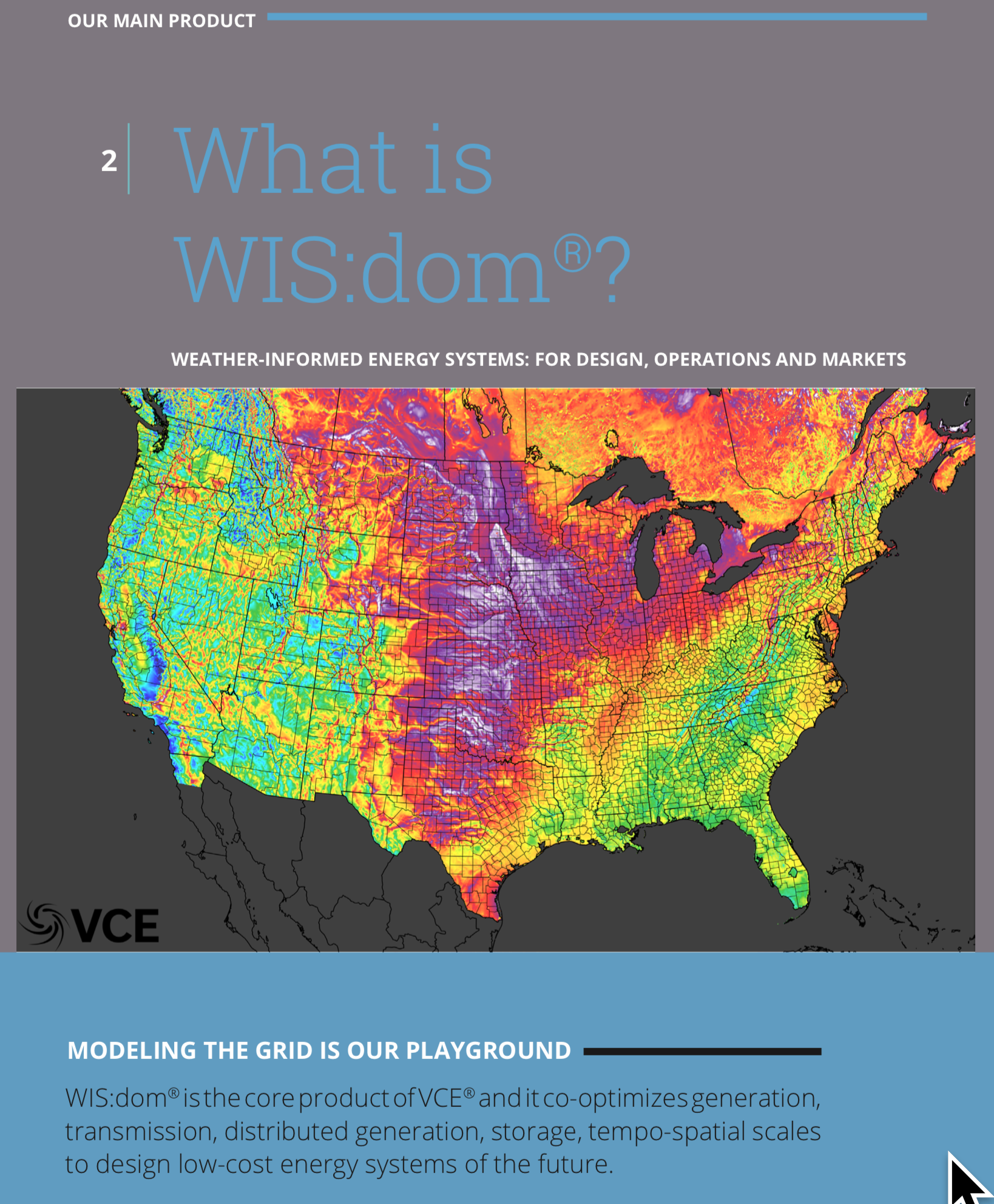Due to the complex nature and customization ability within WIS:dom®, to request a quote for licensing please email [email protected]. We will respond as quickly as possible to discuss your needs and provide a bespoke quote for licensing WIS:dom®. The technical model documentation can be found here: WIS:dom®-P technical documentation (note: we will be launching v10 of WIS:dom-P in Q3 of 2021). Documentation on the weather-driven datasets can be found here: VCE® weather-driven dataset documentation.
The WIS:dom® (Weather-Informed energy Systems: for design, operations and markets) optimization planning model is the state-of-the-art energy model developed by Vibrant Clean Energy, LLC (VCE®). It is the first commercial co-optimization model of energy grids that was built from the ground up to incorporate vast volumes of data; starting with high-resolution weather and demand data.
WIS:dom®-P simultaneously co-optimizes the capacity expansion requirements (generation, transmission, and storage) and the dispatch requirements (production cost, power flow, reserves, ramping, and reliability) for the entire electric (energy) grid of interest. Not only does WIS:dom® co-optimize these critically linked properties, it was developed from the ground up to work with “big data”. The model can determine the cost/benefit ratios for new HVDC transmission lines, compared with other technologies. It can also determine the risk and rewards from retiring existing generators for the topology of the transmission infrastructure; simultaneously to determining how more variable generation is deployed to replace them.
WIS:dom® utilizes high-resolution (spatially and temporally) weather data to determine resource properties over vast spatial-temporal horizons. Thus, WIS:dom® can be used on scales as small as campuses, cities, counties or states/provinces; but uniquely can also be used for sovereign entities and continents. Moreover, these scales can be nested, allowing high-fidelity local modeling accompanied with lower-fidelity larger areas to create feedbacks within the model that simulate outside influences on local markets.
The model relies on publicly available data where possible, and contains default values for generators, transmission, storage, production cost and resource siting. However, WIS:dom® was designed from the beginning to allow “plug-and-play” capability, whereby it can take advantage of customized datasets required for detailed modeling of specific questions, markets or balancing areas. For example, higher-resolution weather data over a utility or ISO; or proprietary heat rates for generators within a utility.
The modeling framework is unique and consistent across various scales facilitating more transparent analysis between results derived. With WIS:dom® new opportunities are identified due to the co-optimization detecting patterns ignored by other modeling endeavors.
The WIS:dom® optimization model allows datasets to be added for specific local interests. For example, WIS:dom® can be deployed for any country or continent around the globe. The model requires the local datasets (or uses the default global one) and then can study various questions of interest – such as greenhouse gas emission, HVDC transmission links, variable generation and reliability, water consumption, air pollution, electric vehicle penetrations, electric heating, jobs and tax revenues, and more.

